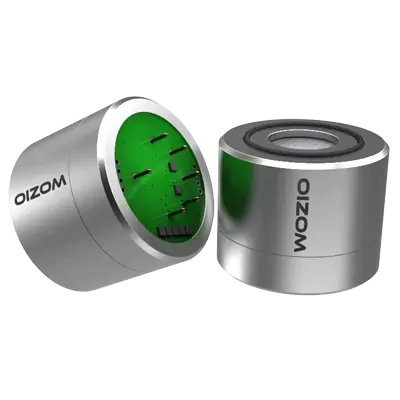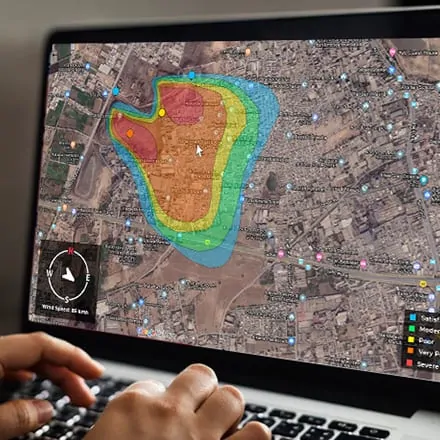Low PPB VOC Sensor Module
PID based VOC sensor for ppb level monitoring

At Oizom, we offer various VOC sensors. Our VOC sensor module can accurately detect very low levels of Volatile Organic Compounds (VOCs) in the air in ppb/ppm. It’s designed to monitor VOC emissions from specific sources in real-time.
What makes this sensor stand out is its advanced electronics, which ensure it is compact, reliable, and capable of stable and accurate Volatile Organic Compound detection at low levels. The sensor uses photoionization detector (PID) technology, which can measure VOCs even in very low concentrations.
This VOC sensor is considered the gold standard for VOC measurement. It’s compact, energy-efficient, and features advanced electronics and longer lamp life. The improved 10.6 eV lamp and particle filter allow the sensor to detect VOCs at levels as low as 1 ppb.
Calibration of the VOC sensor is done using standard gases and tools, following the guidelines set by the USEPA (40 CFR Part 53) and the EU (2008/50/EC). The sensor module is a key component in odour monitoring systems like Odosense and AQBot. It’s ideal for applications such as city air quality monitoring, roadside monitoring, monitoring around oil and gas facilities, power plants, and air quality research projects.
Oizom offers multiple VOC sensor module options:
OZTVOC_1
Measurement Range: 0-40 ppm
Minimum detection limit: 0.005 ppm
Sensor Life: 2 years
Working Principle: Photo Ionization Detection (PID)
Drift: N.A.
OZTVOC_2
Measurement Range: 0-200 ppm
Minimum detection limit: ppm
Sensor Life: 2 years
Working Principle: Photo Ionization Detection (PID)
Drift: N.A.
VOC sensor module works on the principle of PID technology for the measurement of VOC gases. It uses high-energy photons to detect the VOC levels. The air sample drawn into the TVOC sensor is exposed to UV light of a specific output that excites the VOC molecules present in the air sample. The molecules become electrically charged as it ionizes everything that has an ionization energy less than or equal to the UV lamp output. The ions produce an electric current proportional to the concentration of VOC and are measured by the sensor.





